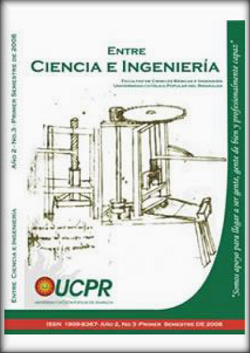Determinación de metales pesados por métodos analíticos en residuos de Sulfato de Zinc producidos en un laboratorio de química.
Keywords:
pollution, waste, sulfates, laboratoriesAbstract
Environmental pollution is harmful when there is a change in the physical, chemical orbiological environment, and it can be caused by human activity (anthropogenic pollution) or bygeochemical or natural causes as well. This affects environmental quality and the possibilityof life for human beings and other species.Wastes produced in chemical laboratories have a number of risks and consequences of verydiverse origin, mainly related to health and environment, because the products aremanipulated and different actions are done with them. Therefore, it is essential to take intoaccount some rules, not only those directly related to the control of occupational hazards, butalso with the specific regulations of industrial safety, emissions and discharges, withoutavoiding the number of local rules which are proposed. In addition, waste managementshould be regulated within a specific plan.This research deals with the qualitative and quantitative determination of heavy metalscontained in waste produced from reactions of Zinc with Copper Sulfate (II) pentahydrate,carried out in the chemistry laboratories in the universities: Pontificia Bolivariana in Medellínand in that one of Havana. The results obtained during the research process showed thatLead was found in high proportion in all the Zinc Sulfates samples, and Nickel metal wasfound in some of them. These metals are considered highly dangerous to humans, flora andfauna.The methods used were: UV-Visible spectroscopy and scanning electron microscopy. Themetal Pb was determined as the main heavy metal, pollutant affecting the health of livingbeings. That is why it is recommended not to dump this waste into the sewer.
References
Baird, C. (2003). Enviromental Chemistry. 2nd edition. ENPSES-MERCIE GROUP, Cuba.
Betancur, M. et al. (2000). “Gestión de los Residuos Producidos en la Facultad de Ingeniería de la Universidad Pontificia Bolivariana”. Tesis de Grado.
Conesa, F-V. (1996). Guía Metodológica para la Evaluación del Impacto Ambiental. Editorial Mundiprensa Libros, SA, 3ra edición, Madrid.
Duffus, J.H. Toxicología Ambiental. Departamento de Cervecería y Ciencias Biológicas. Universidad de Heriot-Watt, Edimburgo. ISBN: 84-282-0681-3-
Enkerlin, E., Cano J., Garza R. & Vogel, E. (1997). Ciencia Ambiental y Desarrollo Sostenible. México: Thompson editores. Pág. 373, 455.
Field, B. et al. (1996). “Economía & medio Ambiente”. Tomo I. McGraw-HILL, Bogotá. Colombia.
García G., Morales M., Villanueva M., Vega R., Henríquez C. (2003) “Educación Ambiental en las prácticas de laboratorio de Química General y Química Orgánica de la carrera de Licenciatura en Química II Conferencia Internacional de Química”, Universidad Central “Marta Abreu” de Las Villas, Santa Clara, (ISBN 959-250-080-0).
Guardino, et al, (1992). Seguridad y Condiciones de Trabajo en el Laboratorio. INSHT. Madrid.
Hilleboe, H. (2006). “Manual de Tratamiento de Aguas Negras” Departamento de Sanidad del Estado de New York. Ed. Limusa. ISBN 978-968-18-0464-0. México. pág. 15.
Manual de Laboratorio (1990): Análisis de Aguas y Aguas Residuales. Pág. 363-364. Universidad de Antioquia. Medellín, Colombia.
Memorias de las Jornadas Internacionales en Derecho del Medio Ambiente (2001). “Justicia Ambiental. Las acciones Judiciales para la Defensa del Medio Ambiente”. Universidad Externado de Colombia. Primera edición. Bogotá. Colombia.
Morales, M., García, G., Torres, D., Castro, M. T., Villanueva, M. & Canfux V. (2007). Educación Ambiental y Desarrollo de Valores en los Laboratorios de Química General. Revista Cubana de Química, Vol. XIX, # 1, Páginas 15-817. C. Habana, Cuba, 2006. ISBN 959-282-27-X.
Parra, E. et al. (2006). “Manejo del Agua en Colombia: Reflexiones”. Exceso de Legislación y Falta de Instrumentos para Aplicarla. Universidad Externado de Colombia. ISBN 958-710-049-2. Colombia. 1ª edición. Pág. 13-14-.
Ríos, M,.L., Esteva, A.M. & Torres, D. (2007). “Proceso de Recuperación de Sulfatos a partir de Residuos Producidos en el Laboratorio de Química”. III Simposio Internacional de Química. I Simposio Internacional de Seguridad Tecnológica y Ambiental. Universidad “Marta Abreu” de las Villas, Santa Clara, Cuba. ISBN 978-959- 250-337-3.
Valdés, M. (2004). “Naturaleza y Valor”. Una Aproximación a la Ética Ambiental. ISBN.968-16-7454-5. 970-32-2143-2. UNAM. México.
Vega, R. et al. (1997). Prácticas de Química General. Ed. Félix Varela. La Habana.
Zumalacárregui, B., et al. (2003). “Problema Medioambiental en Laboratorios Químicos: Trabajo para su Solución”. Revista Pedagogía Universitaria Vol. 8, No. 4, 8-18. Cuba.
Villanueva, M., García, G. & Bravo, K. (2004). “Manual de Prácticas de Laboratorio con Enfoque Ecológico”. Facultad de Química, Universidad de La Habana.








 Revista Entre Ciencia e Ingeniería
Revista Entre Ciencia e Ingeniería .png) entrecei@ucp.edu.co
entrecei@ucp.edu.co.png) ISSN (Impreso) 1909-8367 - ISSN (En Línea) 2539-4169
ISSN (Impreso) 1909-8367 - ISSN (En Línea) 2539-4169 Attribution-NonCommercial 4.0 International (CC By-NC 4.0)
Attribution-NonCommercial 4.0 International (CC By-NC 4.0)
.png) Carrera 21 No. 49-95 Av. de las Américas, Pereira, Risaralda, Colombia
Carrera 21 No. 49-95 Av. de las Américas, Pereira, Risaralda, Colombia